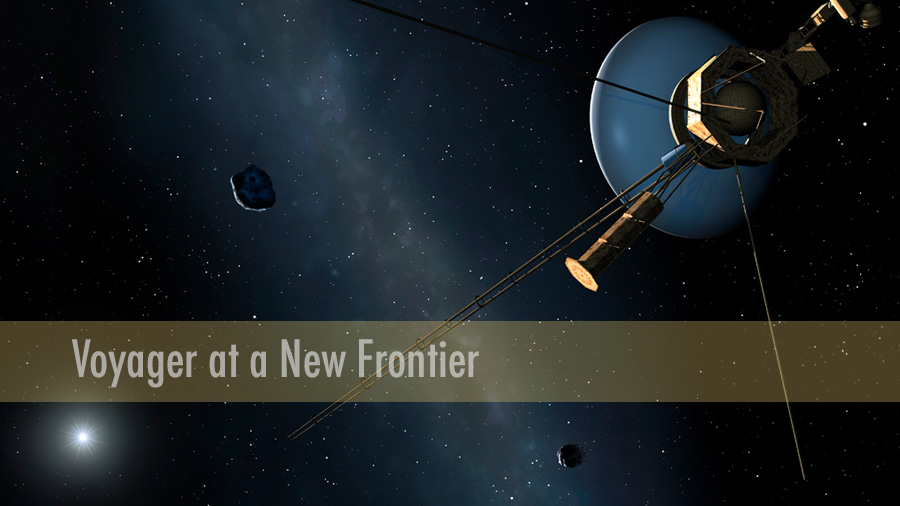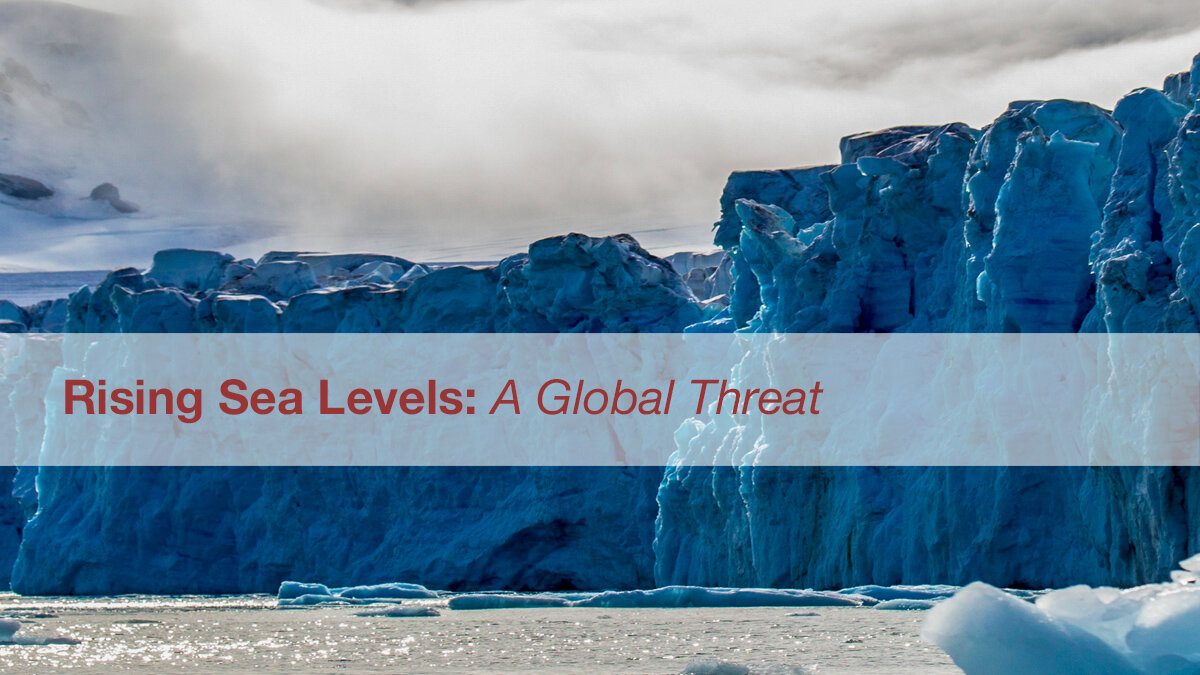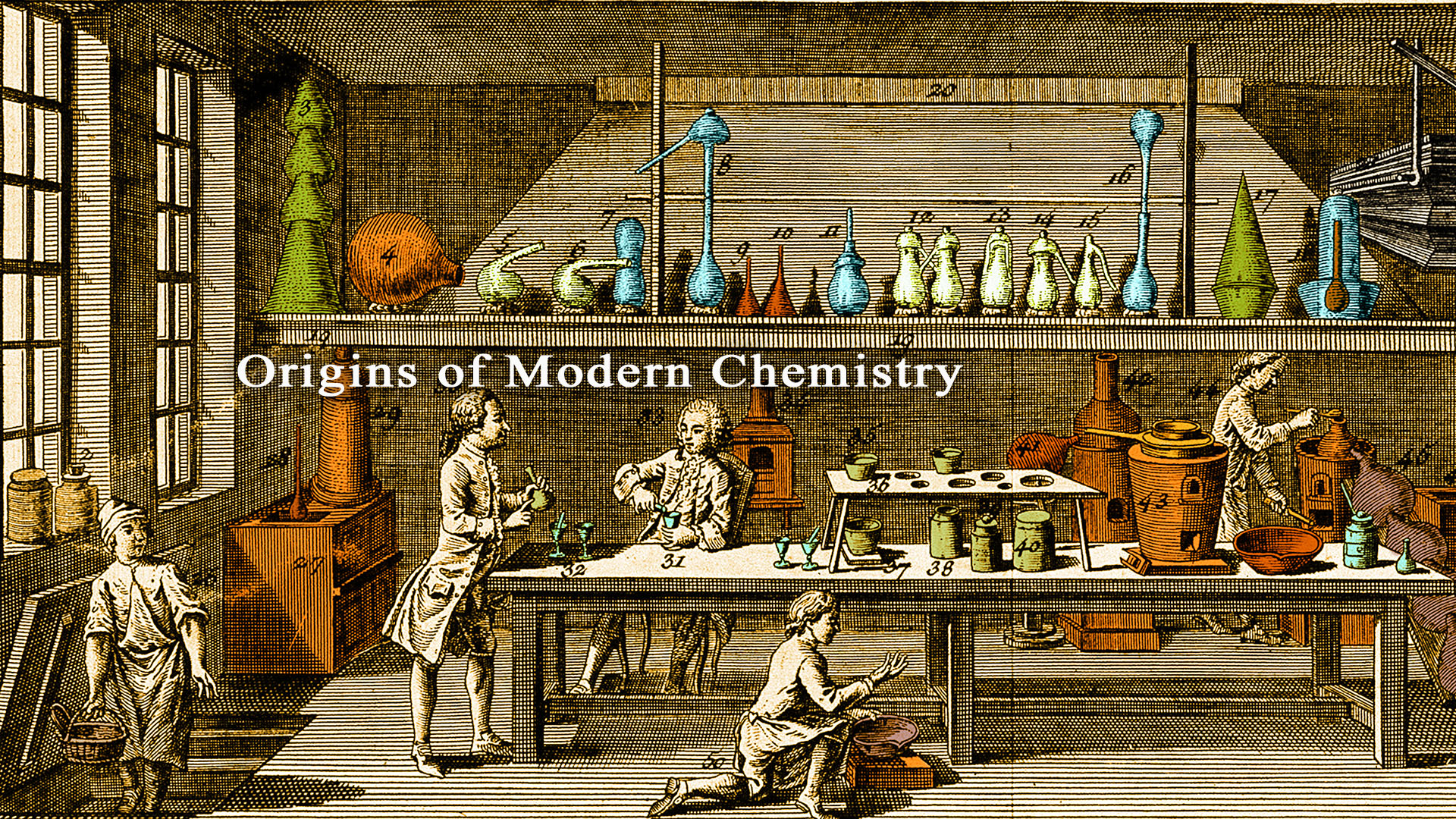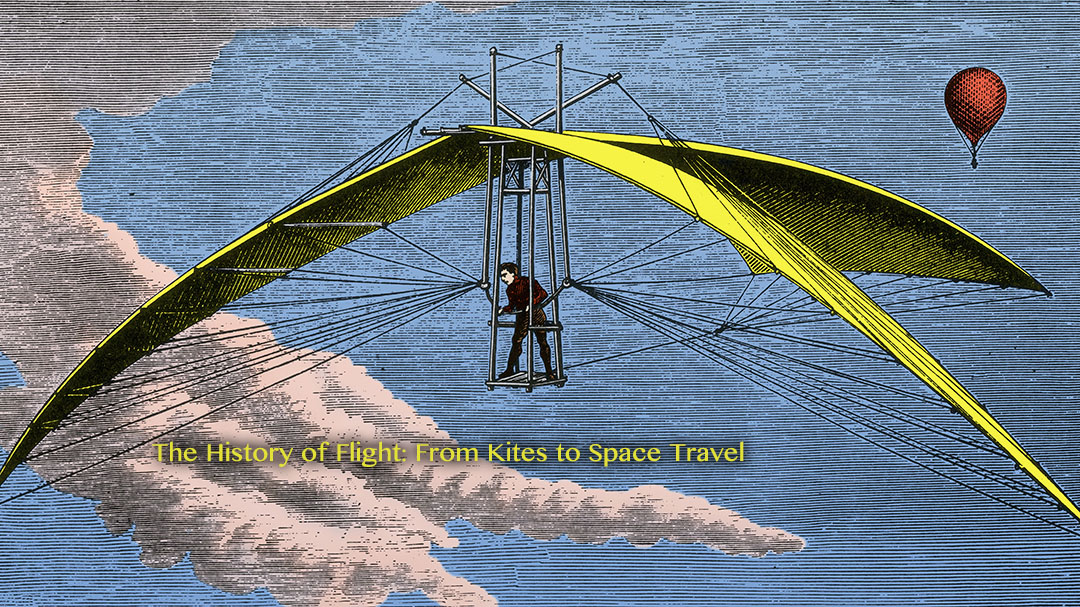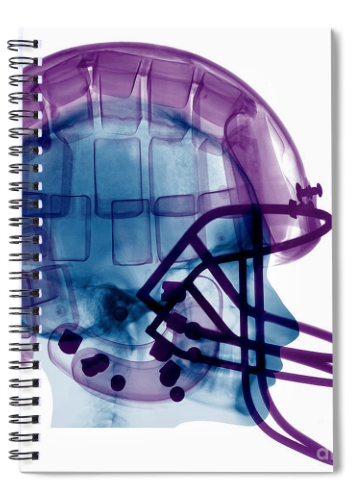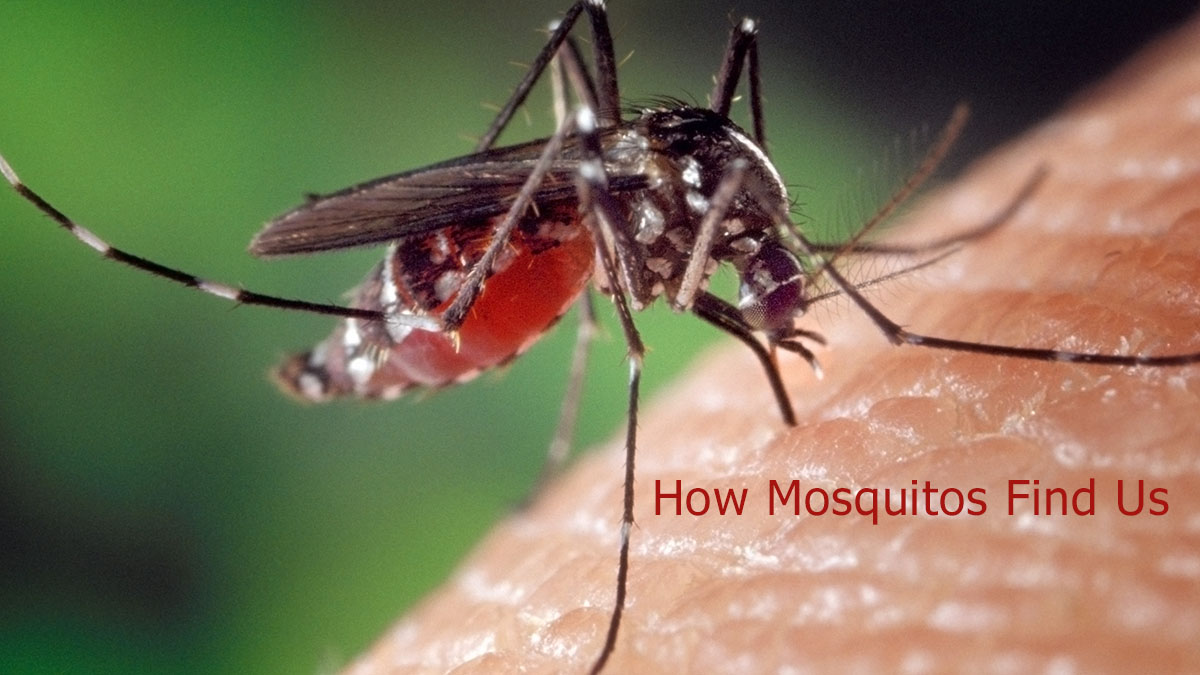Rising Sea Levels
One of the most significant challenges related to global climate change is rising sea levels. Since the beginning of the 20th-century, sea levels have gradually risen by 16 - 21 cm (6.3 - 8.3 in).
The rise in sea levels has also accelerated over time due to thermal expansion (the change in the volume and area of matter due to increased temperatures) and the melting of ice sheets and arctic glaciers.
Stock Image Gallery of Rising Sea Levels
Researchers have calculated that arctic sea ice has declined by 10% in the last 10 years. In addition to rising sea levels, this has altered the circulation of the Atlantic Ocean, destroying fisheries in northern countries and creating massive storms and hurricanes.
Coastlines around the world remain susceptible to flooding. Some at-risk coasts include the Miami shore, Rio de Janeiro, Osaka and Shanghai. The Egyptian city, Alexandria, faces a particular threat as much of its population exists in low lying coastal areas, which will likely be inundated within the next decade.
Our best hope for limiting the increase in sea levels is to reduce our carbon footprint. Initiatives in renewable energy and efficient power are critical components in reaching our emission goals.
For images of climate science and rising sea levels, click the links above. For information on how you can help deduce our carbon emissions head to the Environmental Defense Fund. (www.edf.org)
Plastic is Deadly
While plastic items in our daily lives are designed for one-time use, they have a long life span, usually up to 1,000 years.
Plastic is also deadly. People consume thousands of plastic articles each year, which damage our health, especially our immune systems. Plastic particles are even in the air we breathe, floating in the remotest places from fields to mountains.
Stock Image of Plastic Pollution and Wildlife
For many animals plastic is lethal. Sea birds get caught in plastic fishing line and starve to death. Small mammals choke and die in 6-pack plastic rings. Dolphins and whales swallow plastic particles that block up their bodily systems. Sea turtles suffocate in plastic bags and floating debris prevents them from surfacing for air.
Luckily, as awareness grows, people are working to clean up plastic in the environment. New types of safe, biodegradable plastic are also coming on the market. We have a very long road ahead, but with more awareness and countries working towards a common goal, we have a more hopeful future.
plastic pollution, wildlife, animals, plastic in our lives
Plastic Pollution: Framed Prints, Masks, Tote Bags, Note Books, and More…
Endangered Animals
Species around the world are facing extinction from threats ranging from ivory poaching to global climate change. Organizations such as the World Wildlife Fund have responded to the crisis with far-reaching conservation efforts.
The black rhinoceros has long been a victim of poaching for the international trade in rhino horn. British colonists began hunting rhinos in Africa during the colonial era and poaching has continued to this day. Conservationists work to protect rhino populations by building conservations and training local rangers to fend off poachers, but victories are hard fought. The black rhino’s population has sunk to 2,300 in recent years.
The polar bear has risen to public awareness due to the impact of climate change on the Arctic. Since 1979 the volume of sea ice shrunk by 80%, dramatically reducing the polar bear’s natural habitat. Experts say that the population of polar bears decreased to 20,000 to 25,000 in the last decade, classifying them a ‘vulnerable’ species. Conservationists work with businesses and governments to support green energy initiatives and help mitigate climate change.
Endangered Species Stock Image Gallery
It is worth noting that animals that enter the endangered species list do not always stay there. Famously, the American buffalo was reduced to near extinction following the American expansion into the western frontier but conservation efforts have increased their numbers gradually throughout the 20th century.
Likewise, the giant panda faced extinction a decade ago but has recently made gains due to protected habitats in China. Another encouraging story comes from the Siberian tiger, which was reduced to double digits in the early 1900s but has since increased to about 500.
While species around the world become endangered, conservationists continue to fight for their survival. Find out how you can help by visiting the World Wildlife Fund below. For a full gallery of endangered species follow the link and be sure to check out our storefront for great animal gifts.
The World Wildlife Fund
Endangered Animals: prints, masks, tote bags, and cellphone cases
wwf.org
rhinos.org
telegraph.com
Immunotherapy: Your Immune System is Cancer's Biggest Enemy
There’s no doubt about it - our immune systems are powerful. We’ve all had moments where we don’t pay much attention to our immune systems because of lack of sleep or high stress, and had to endure bouts of sneezing, coughing, or fever in the coming days. Some of us have taken extra steps to make sure our immune systems are as strong as possible, and noticed how invincible it feels to go months without getting sick. Everyday function, brain power, and physical ability depends strongly on our body’s ability to fight off viruses and disease.
The power that our immune system provides in determining our health can even be utilized to fight cancer. Immunotherapy is a method of cancer treatment that helps to strengthen the immune system to be able to fight cancer cells better, as well as direct the immune system towards specific cancer cells.
RF and RM Stock Images and Video of Immunotherapy
A large number of cells in our body aid in the immune system. White blood cells (lymphocytes) recognize foreign bodies such as viruses and fight them with antibodies, which are proteins that are sent out to bind to these foreign bodies. T cells are a specific type of white blood cell that search for, capture and destroy foreign bodies and infected cells.
Immunotherapy works with these cell types to focus in on cancer cells and kill as many as possible. There are many different methods of immunotherapy that enhance the immune system in a variety of ways.
Proteins called monoclonal antibodies (therapeutic antibodies) can be created in a laboratory and used for immunotherapy. These antibodies are introduced into the body to flag cancer cells so the immune system can more easily detect them.
Checkpoint inhibitors can be put into a patient’s bloodstream to disable proteins that stop the immune system from attacking cancer cells. These proteins attach to T cells, and can activate or deactivate the immune system when needed. Because cancer cells can pose as normal cells and pass a T cell checkpoint without any activation of the immune system, checkpoint inhibitors are used to make sure that T cells will be activated to help destroy cancer cells with each encounter.
Adoptive cell transfer is a form of therapy that can also help boost the function of T cells. In this method, T cells are taken from the body, and the cells that are most defensive are grown and multiplied in a lab and put back into the body intravenously.
Prints of Cancer and the Immune System
Through the technology that scientists now have available in labs, immunotherapy provides another option for cancer treatment which can give many patients more hope. Although this type of therapy has its own side effects, and sometimes has the potential to damage the body, it has been known to successfully treat some cancers when radiation or chemotherapy failed, and can also enhance the effectiveness of other methods of treatment when used in combination.
Overall, it has the potential to provide hope to many of millions of people around the world affected by cancer.
livescience.com
cancer.gov
immunology.org
pacificimmunology.com
tcells.org
Origins of Modern Chemistry
How did we get from discovering fire to using nanotubes in labs?
The concept of atoms was first conceived in ancient Greece by a group of philosophers known as the atomists. In 330 BC, Aristotle opposed this theory. He was a proponent of the elemental theory, positing that all matter was composed of the elements earth, fire, water, and air. He even added an element, aether (or ether).
The elemental theory continued into the middle ages through the study of alchemy. Alchemists added sulfur, salt, and mercury to the list.
RF and RM Stock Images and Video
of the History of Modern Chemistry
Finally, in 1661, Robert Boyle published the book "The Sceptical Chymist", presenting his hypothesis of particles in motion and asserting that only experiments using the "scientific method" could be considered true.
Another milestone in chemistry was the discovery of electrochemistry. Alessandro Volta invented the first battery in 1800, using piles of copper and zinc discs. They were separated by cloth soaked in brine. When wires were attached to the top and bottom, electricity flowed through the wires.
Order custom notebooks, t-shirts, masks, tote bags, and more gifts for your favorite scientist or grad.
Antoine-Laurent de Lavoisier established the Law of the Conservation of Mass, also called "Lavoisier's Law", in 1789. His book "Elementary Treatise of Chemistry" is considered the first modern chemistry textbook. It contained a list of elements, or substances that could not be broken down further, including oxygen, nitrogen, hydrogen, phosphorus, mercury, zinc, and sulfur.
Lavoisier unfortunately lost his head to the guillotine during the French Revolution, but not before beginning his own revolution in science and becoming the father of modern chemistry.
History of Flight: From Kites to Space Travel.
There are over 100,000 airplane flights a day, with almost 10,000 planes in the air simultaneously. It's taken humanity thousands of years to get to this point, starting with the invention of the humble kite in China in 475 BC.
The popularity of kite flying in China began people thinking about making human flight a reality. Soaring through the air untethered to the ground. Before, it has been the realm of mythology, such as Icarus, Alexander the Great, and Pegasus.
Images & Video of the History of Flight
On the way, there were many failed attempts over the centuries. At first, many inventors tried to replicate the wings of birds, even using feathers or lightweight wood. But, a human's arm muscles are not like a bird's.
Leonardo DaVinci made over 100 drawings of his theories of flight and flying machines. None of which were built in his lifetime.
It took until 1783, Paris, France before man reached this goal. Jean-François Pilâtre de Rozier and François Laurent d'Arlandes flew in a balloon created by the Montgolfier brothers.
Balloon travel brought us blmips, zeppelins, and airships. Over time the hot air balloon was refined and morphed by inventors, eventually bringing us to gliders. This development brought us a big step closer to a true airplane. George Cayley designed version of a glider that use the movements of the human body to control it.
T-shirts, Mugs, Masks, Notebooks and Other Custom Gifts of the History of Flight
Samuel Langley, who was the Smithsonian Institute Secretary came close to unmanned flight in 1891. He built a model called the Aerodrome, which was powered by a steam engine. It flew for 3/4 of a mile. But, when he scaled it up to fit a person, it never flew successfully. After one test flight over the Potomac River, a journalist said, " It slid into the water like a handful of mortar."
While Langley was concentrating on propulsion, the Wright Brothers, bicycle mechanics by trade, in Kitty Hawk, NC, were focus on balance. They did their research without the help of a large institution, looking into the history of flight so far, and building models and even a wind tunnel.
Finally, on December 17, 1903, Wilbur and Orville Wright successfully flew the first powered aircraft. Their plane flew 852 feet. In another 11 years, the first scheduled commercial flight took off, transporting people between St. Petersburg and Tampa, Florida.
Planes become critical during WWI. The Germans used airplanes such as the Fokker Eindecker as well as Zeppelins to drop bombs on the allies.
In 1927 Lindbergh completed the first solo nonstop flight across the Atlantic Ocean. Eventually, commercial air travel would become commonplace.
Today gigantic cargo planes with wingspans of 290 feet can carry 640 tons.
Humans are never satisfied, so we keep pushing flight further. First to land on the moon and who knows where we'll travel next.
Vaccines: How They Protect Us
Although vaccination has been a hot topic in recent news, the study of vaccination goes back to around 1,000 years ago. Early records of smallpox immunization, called variolation, can be dated back to 1000 CE in China.
Variolation was a practice that involved taking material (usually part of a scab) from a patient that was infected with smallpox and exposing a healthy individual to this material. The doctor would often insert the infected material underneath the healthy person’s skin to achieve proper exposure. The hope was that the healthy person would get sick, their immune system would successfully fight the virus, and they would then be immune to the disease once they recovered. Not surprisingly, some patients died from an intentional infection of smallpox, but the ones that did survive were indeed immune to future infections.
RF and RM Images of Viruses and Vaccines
Luckily, we have since discovered a less risky immunization method, but the general concept is similar. The body is exposed to the germs of a virus to elicit an immune response, which is a fight from the immune system to attack the organisms, kill them, and protect the body from being infected. If the body is exposed later on to the same virus in its active form, the immune system recognizes it and knows how to fight it off. But instead of using full-force, potent forms of the virus, we now use killed or weakened germs from a virus to provoke an immune response.
Physicians use attenuated (weakened or altered) forms of the virus because they signal the immune system to learn how to fight the disease without hurting the body. The ‘germs’ they use in the vaccination are samples of microbes or proteins that make up the virus.
Through all of the research and discoveries surrounding vaccines, we’ve been able to prevent a long list of diseases, such as cervical cancer, measles, hepatitis B, whooping cough, pneumonia, mumps, and polio.
Recent outbreaks of measles have occurred in the US and Europe in insular communities where groups of people resist vaccination. The CDC confirms 880 cases of measles occurring across the US this year, the greatest number of cases reported since the disease was declared eliminated in 2000.
Historically, the link between outbreaks of diseases and a concentrated lack of vaccinations holds true. Both Britain and Japan developed anti-vaccination trends in the 1970s, caused mainly by skepticism about whooping cough (pertussis) vaccine. The World Health Organization reports that 100,000 children were infected with whooping cough in Britain, and 38 died. In Japan, the number of infected individuals went from 393 to 13,000 cases, and the number of deaths went from 0 to 41.
With such a long history, vaccines continue to shape the knowledge we have about our bodies, immune systems, and how easily viruses and bacteria can affect our health.
Virus and Vaccine Prints, Masks, Notebooks, and More
npr.org
who.int
historyofvaccines.org
cdc.gov
Concussions and the Future of Contact Sports
Injuries are the last thing one thinks of on game day but they’re an inevitable part of professional sports and they’re shaping what athletics will look like in the future.
Concussions are one of the biggest threats to professional athletes today. Repeated concussions can lead to memory loss, personality changes, depression and anxiety. After suffering one concussion a person is more likely to suffer a second one, and the effects become more severe. Multiple concussions can increase the risk of Alzheimer’s, Parkinson’s and CTE.
Chronic traumatic encephalopathy (CTE) is a brain disorder that occurs after repeated head injuries. Symptoms include memory loss, impaired judgement, aggression, depression and suicidal thoughts. In one famous case, Aaron Hernandez, a young professional football player, committed suicide in prison without knowing he had the disease.
Sports Injury and Video Gallery
A number of sports have changed their rules to prevent head injuries. The NFL, for instance, has moved kickoffs from the 30 yard line to the 35 yard line to reduce the speed players reach before colliding with each other. The NFL will also now penalize a player who lowers his head to make contact with his helmet against an opponent.
Professional boxing and MMA (mixed martial arts) have outlawed strikes to the back of the head, or ‘rabbit punches’. The weight of fighters’ gloves has also changed over the years to control the damage of punches and protect the hands. Larger boxers generally wear heavier gloves, but it is still unclear how much the weight of gloves mitigates the impact of punches.
As rules and regulations change, the future of contact sports remains unclear. For now, anyone participating in contact sports should wear proper safety gear and maintain industry standards.
For a full gallery of sports injuries check the link above and for great sports gifts head to our storefront below.
Sports Phone Cases, Prints, Masks and More
popsci.com
mayoclinic.com
webmd.com
NASA and the Space Age
In 1957, an amazing spectacle appeared in the North American night sky – Sputnik, the first satellite to enter Earth’s orbit. The USSR had successfully sent a rocket into outer space, thus beginning the space race, an event which would last a decade and challenge the best and brightest of two nations.
In response to Sputnik, President Dwight D. Eisenhower created NASA, the first American administration for space exploration in 1958. With Project Mercury, NASA attempted to make the first manned mission into space, but failed to beat the Russians, who sent Yuri Gagarin into orbit in 1961. A month later Alan Shepard became the first American in space and John Glenn followed soon after, orbiting the Earth three times in 1962.
Gallery of NASA Stock Images and Videos
In the Sixties, NASA entered a new era. With the cold war raging and the threat of nuclear armament on the horizon, President John F Kennedy vowed to redouble NASA’s efforts and put an American on the moon by the end of the decade. In 1965, NASA began the Spacelab project, sending the first space station into Earth’s orbit. Despite sustaining damage during take off, the station was repaired in space and orbited the Earth until 1979.
The success of Spacelab led to NASA’s famous Apollo missions to the moon. After many failed attempts, Apollo 8 became the first shuttle to circle the moon in 1968. The following year, the USSR accomplished its first moon tour, leaving the space race at a stalemate.
With the cold war raging in the east, astronauts Buzz Aldrin and Neil Armstrong of Apollo 11 successfully landed on the moon in 1969. The mission effectively ended the space race and cemented America’s place as the world leader in space exploration. Buzz Aldrin and Neil Armstrong became national heroes and were awarded the Presidential Metal of Freedom later that year.
Since then, NASA has continued its exploration of space sending probes to every planet in our solar system, including the dwarf planet, Pluto. It also landed four rovers on Mars, the last of which, Curiosity, is still collecting data from its craters today.
The recent image of a black hole in the M87 galaxy is more proof of human potential in space exploration. For the Space Age to advance, we must continue NASA’s legacy into the future. For more astronomy images check out the gallery above, and for unique astronomy gifts check out our store front below.
Astronomy Phone Cases, Masks, T-shirts and More
nasa.com
nytimes
Don't Sweat It: How Mosquitos Find Us
Scientists recently came one step closer to figuring out how to stop mosquitoes from biting us.
Mosquitos have plagued humans and other warm-blooded mammals for eons. Aside from ruining an otherwise beautiful summer evening with their itchy bites, they transmit some of the worst diseases known to man. Malaria, zika, yellow fever, dengue, West Nile Virus, encephalitis, and chikungunya are some of the deadliest.
RF & RM Stock Images of Mosquitos
Many of these have no cure and may cause congenital disabilities or death.
In the United States West Nile virus, eastern equine encephalitis, western equine encephalitis, St. Louis encephalitis, La Crosse encephalitis, dengue, and yellow fever are all transmitted by mosquitoes.
The good news is that scientists continue to discover precisely how mosquitoes find us? It will help us figure out how to stop them from biting us.
The recent finding confirms that it is the acids in our sweat that attract them. Genetically altered mosquitoes that couldn't sense these acids were not drawn to us.
For now, the best method is still to use repellent with DEET (N,N-diethyl-meta-toluamide) or another chemical that masks the smell of our sweat.
The future is looking brighter than ever for us to prevent mosquito bites and thereby eradicate many diseases.
The Link Between Gum Disease and Alzheimer's
Alzheimer's is the most common form of dementia and thereby the fifth leading factor of death worldwide. Over 5 million Americans suffer from this degenerative disease. The exact cause and therefore cure has befuddled scientists and researchers for decades.
Scientists have known that abnormal clumps, amyloid plaques, and tangled bundles of fibers, tau, are involved.
Up until now, these features were the focus of the battle against Alzheimer's, but a recent study shows another possible cause: gum disease.
Stock Images and Video of Alzheimer’s and Gum Disease
This study indicates that amyloid plaques and tau bundles might be existent as a reaction to a specific gum disease bacteria, Porphyromonas gingivalis, traveling to the brain. Overdevelopment of amyloid and tau proteins leads to the blocking of neuron function and the degeneration of brain cells.
The hippocampus is where this process usually begins. Neurons will die as they lose function, and the more this happens, the more the brain is affected. The areas that handle memory are affected first, and eventually the disease will spread to cells that control body function.
In the mouth, Porphyromonas gingivalis, known as Pg, leads to chronic periodontitis, causing chronic inflammation and potential tooth loss. If left untreated, this bacteria can spread into the brain. Pg was found in 51 of 53 Alzheimer patients studied. This connection offers hope for preventing and halting the disease.
Tests to begin formulating a drug that will prevent or help those at risk have already started. In mice, scientists were successful in reducing the number of Pg bacteria in infected brain cells, thereby stopping the production of the toxic proteins amyloid and tau.
There is finally hope, as most people have been touched by this disease, either themselves or by someone they care for.
newscientist.com
webmd.com
nypost.com
cnn.com
cbsnews.co
The Women of Coding
In 1833, Lady Ada Lovelace, the only legitimate daughter of Lord Byron, became the first computer programmer when she created a machine for computing called the Analytical Engine. Her partner, Charles Babbage, designed the hardware, while Lovelace focused on the machine’s inner workings or what we now call “software.” Bringing the machine to its absolute limit, Lovelace published the first computer algorithm in 1843.
Lovelace’s legacy would continue into the 20th century, as women entered the workforce. While men were busy fighting WWII, a group of female computer scientists, including Betty Holberton, Kay McNulty, Marlyn Wescoff, Ruth Lichterman, Fran Bilas and Betty Jean Jennings programmed the ENIAC, one of the first general purpose computers. Although they were called “subprofessionals” by their peers and “refrigerator girls” by historians, Hoberton and her team used ENIAC to make crucial calculations on the trajectory of ballistic missiles for the US and its allies.
View More Women of Coding
The military would give rise to another great coder when Grace Hopper, a professor and computer scientist, joined the navy reserve and developed one of the earliest programming languages, COBOL. Hopper went on to create the first compiler, a device for synthesizing written language into code. By the end of her career, she had risen to the rank of rear admiral and even got a US destroyer named after her.
In the 1980’s women’s participation in coding suddenly dropped. While the reason is unknown, Sara Kiesler, a social scientist, believes the advent of personal computers was chiefly responsible. Kiesler argues that when computers entered the home, parents made them the domain of boys and not girls. The culture surrounding tech became male-dominated and many women decided to opt out of the field completely. Female participation in programming was cut in half, and today only 18 percent of computer science graduates are women.
If you have a daughter or niece this Women’s History Month, encourage their interest in computers! Tell them that a career in coding is a girl thing too and that they can make history!
Click the link above to see more great female programmers and check out our storefront for great science gifts.
Science Prints, Masks, Mugs, Phone Cases and More
nytimes.com
history.com
Climate Change, Extreme Weather and the Jet Stream
In the last decade or so, we’ve experienced giant tornados, damaging wildfires, flood-inducing rainstorms, fatal heat waves, and droughts destroying crops and livestock like never before.
At the same time, the polar jet stream, a westerly wind generated by solar radiation and the corolla effect (a phenomenon that creates our weather) has been behaving in unprecedented ways. Scientists believe this is not a coincidence, rather, it is related.
Stock Images of Climate Change,
Extreme Weather and the Jet Stream
Normally, the jet stream travels either in a straight line or undulates in waves called Rossby waves. Rossby waves bring warm air northward and cold air southward. This can create a temporary heat wave or a rainstorm.
The jet stream is powered by the temperature differential between the cold arctic air and the warmer air in the lower latitudes. As global warming continues to warm the arctic air, the jet stream is losing its power. The Rossby waves have become larger, expanding much further north and south than before.
They are bringing temperatures and weather that is unusual for our local climate. Records show that Southern U.S. states now get snow more regularly than in the past.
Once Rossby waves, especially weakened ones, reach a certain size they can stall in place, permitting a heat wave or a rain weather system to last days or weeks longer than the norm.
With no end in sight to global warming or even a slowing of it, we are likely to be in for even more extreme weather that increases in intensity and stays put for longer.
Fine Art Prints of Wild Weather on Metal & Canvas
A growing number of scientists are predicting that perhaps as soon as 2050 the climate in the southern latitudes may be unlivable and the Arctic could be our new temperate zone.
Get ready to move north, and bring your umbrella, sunscreen and snow boots.
wikipedia.com
scientficamerican.com
sciencefriday.com
What You Need to Know About Crohn's Disease and Ulcerative Colitis
Crohn’s disease and ulcerative colitis are largely unfamiliar terms. Hundreds of thousands of Americans are affected by these conditions, however many people still don’t know how to identify the two, or understand how they relate and differ.
Crohn’s and colitis are both inflammatory bowel diseases (IBD), which result from an overactive immune response that treats the normal, healthy contents of the colon (such as good bacteria and food) as foreign invaders. When the immune system detects a foreign substance, it sends a sea of white blood cells to the site of this substance, which in turn causes inflammation. Victims of IBD struggle to experience healthy digestion that doesn’t involve their system getting unnecessarily attacked by an immune response.
The body’s reactions to these two diseases are often described similarly: loss of appetite, weight loss, urgent bowel movements, diarrhea, and fatigue. They are both long-term (chronic) conditions; individuals who are affected will likely have symptoms that come and go throughout their lives. The onset of symptoms tends to be inconsistent, and when there are time periods without symptoms the diseases are deemed to be in remission.
Stock Images of Crohn’s Disease and Ulcerative Colitis
Although Crohn’s and colitis have some similar traits, they are certainly not the same condition.
Ulcerative colitis causes inflammation that gives rise to ulcers in the inner lining of the colon (large intestine). The ulcers permit unwanted fluids such as mucous into the digestive system, which perpetuates irritation. It affects the colon exclusively, while Crohn’s disease can affect any part of the gastrointestinal (GI) tract, including the small intestine, large intestine, mouth, stomach, or anus.
While Crohn’s disease can affect many different parts of our anatomy, the most commonly affected site is the ileum, or the area that joins the end of the small intestine and the beginning of the colon. Unlike ulcerative colitis, Crohn’s can affect not only the inner lining of the intestine, but the entire intestinal wall. It is also known to ‘skip’ patches of the intestines, leaving some parts of the anatomy unaffected by the disease, and some parts inflamed and dilapidated. This pattern of damage throughout the bowels distinguishes Crohn’s from ulcerative colitis and other diseases.
The causes of both Crohn’s and colitis still remain somewhat of a mystery to researchers. Consistencies within studies that revolve around genetics have begun to pave the way towards some answers. Many people that have ulcerative colitis have a family member that is also affected; if someone in your family has Crohn’s your chances of developing the disease may be higher.
There have also been studies on environmental factors, finding Crohn’s disease more common in industrialized countries than in the developing world, and more common in urban areas rather than areas encompassed by farmland. Stress and high-fat diets are thought by some to be contributing factors as well, and may trigger an existing condition.
Even if you have family members that suffer from these diseases and are experiencing some of the common symptoms, it is important to be tested by a physician. Multiple tests, including physical exams and diagnostic scans, are often required for a proper diagnosis.
Although there is no cure for ulcerative colitis or Crohn’s disease, there are many different kinds of medicines available to keep symptoms at bay and remission intact. Researchers are continuing to study possible causes, however these conditions have thus far remained puzzling, even to experts.
crohnscolitisfoundation.org
niddk.nih.gov/health-information/digestive-diseases/crohns-disease
niddk.nih.gov/health-information/digestive-diseases/ulcerative-colitis
The Dead Do Tell Tales
A murder victim can no longer speak like you and I can, but through scientific methods they may have an awful lot to say. This is the science of forensics, and there are many branches of it.
Forensics has been popularized by many TV show, books, and movies. Everyone is familiar with the fast-paced crime solving that is showcased: a piece of evidence gets delivered to a crime lab, within hours or mere minutes it is analyzed, and the forensic scientist is off to capture the criminal.
Stock Images of Forensic Science
In reality, what forensic scientists do is a bit different. They rarely, if ever, visit a crime scene, and they certainly don’t chase down suspects, gun in hand, after spending an hour in the lab doing DNA analysis. A typical forensic scientist spends their entire day in the lab. Most DNA takes about 30 days to process due to budgetary constraints and the vast number of cases.
Despite not usually doing filed work, the excitement and rewards of being part of a successful case and of capturing a criminal are just as satisfying.
Custom Forensic Themed Mugs, Totes, Masks, T-shirts and More
Forensics is a large, diversified field. A few of the branches include psychology, accounting, botany, entomology (insects), dactyloscopy (fingerprints), microbiology or the study of the necrobiome (organisms related to a decaying corpse, toxicology, and anthropology).
Forensic anthropology is considered one of the most fascinating fields. It deals with skeletonized, decomposed, burned, or otherwise unrecognizable human remains, such as in a plane crash. A forensic anthropologist works through an intricate puzzle, finding clues in the tiniest details. These scientists often work with others in the field such as dentists, pathologists, investigators, and other expert scientists.
Forensic anthropologists can use their knowledge to determine age, sex, ancestry, and stature from a minuscule amount of human remains. They can also look into a body’s history; past injuries indicated by bone fractures, or evidence of diseases such as cancer. All of these details will narrow down the identification of a person.
Even though forensic anthropology is now in the realm of hard science, it got its start with pseudoscience. Phrenology and physiognomy, early notions that temperament and character can be deduced from physical appearance, were early forms of forensic anthropology that have since been discarded as junk science.
Today, forensic anthropology is a highly trusted means to discover the truth behind a crime. Each year, more tools are added to this arsenal as scientific advances are made.
sciencemag.org
wikipedia.com

